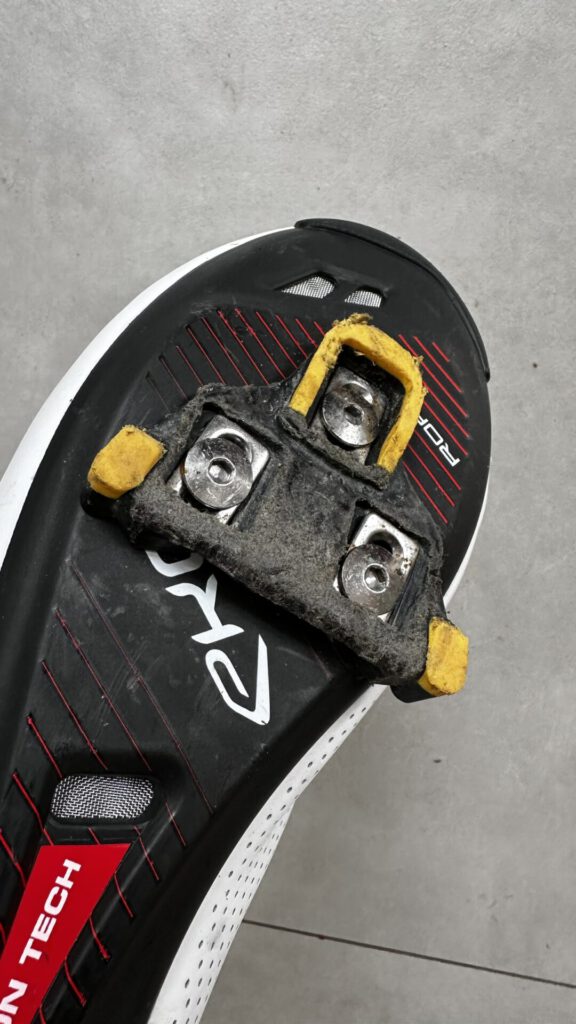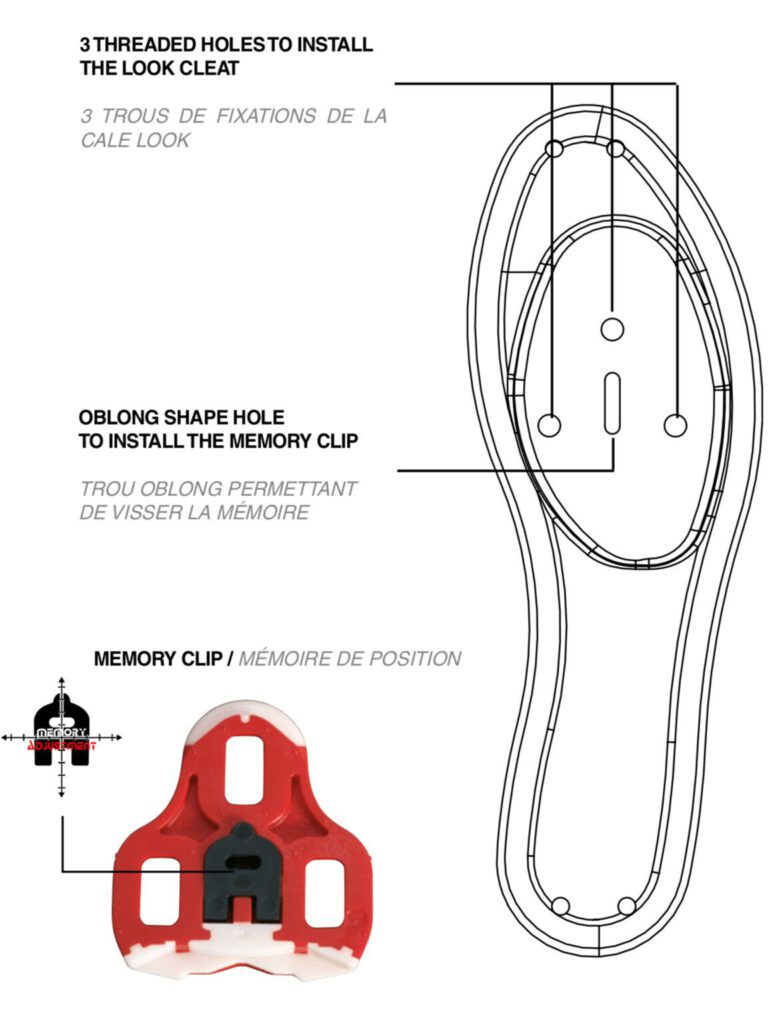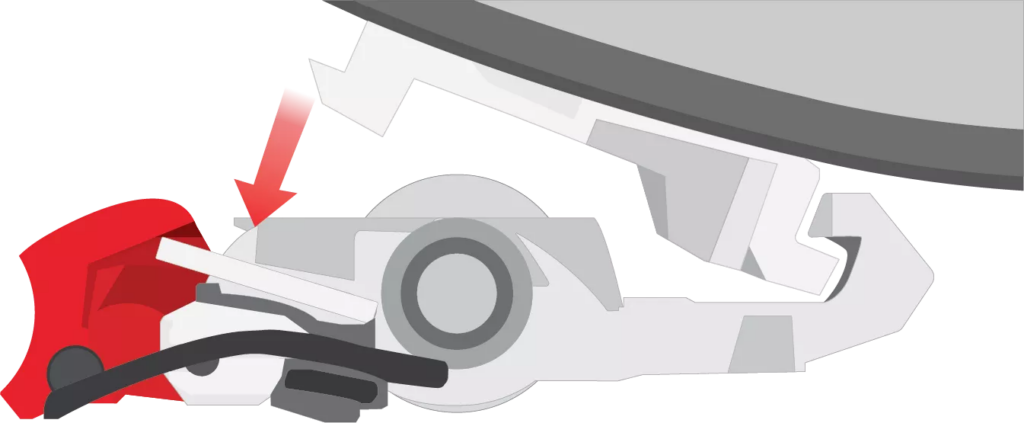Cyclists, gravel riders and MTB riders all use them: click pedals, and with click pedals come cleats. When you start cycling (cycling, gravel, mountain biking), things get dizzying pretty quickly. You have to buy all sorts of things, you have to know all sorts of things. You watch TV and you see riders 'click in'. 'Should I do that too?' The answer to that question is: 'yes, I think so'. In this article, I will take you through and give you tips on the different types of click pedals and cleats. Because for your cycling adventures, it is quite useful to know which pedals are available and which ones are best to use for road bike, gravel bike and MTB.


Determine pedals
If you are going to buy a sports bike, that bike comes almost by default without pedals. That's because every cyclist uses their own kind of pedals. From flat pedals, which you can use your trainers on, to pedals with a click system. There are several different pedal click systems in circulation. Each brand has its own system and its own corresponding cleats. Each with slightly different features. As the subtitle says: pedals determine. But what can you choose from?
Producers
In the world of pedals and cleats, there are four names to remember:
These are four manufacturers of pedals, with matching cleats. Each manufacturer has its own philosophy, but they have one thing in common: you can lock your feet into your pedal, allowing you to apply power throughout your pedal stroke. The result? More speed, but also good control over your bike. Three of the four offer specific 'off-road' pedals and plates. We briefly list the different types.
Shimano
Parts manufacturer Shimano offers two different types of click pedals:
- SPD pedals: these are meant for cycling by the side of the road. For MTBers and gravelers So. You can also use SPD pedals on road bikes, but they are not fundamentally meant for that. SPD pedals have small cleats, so they fit well in the rougher, studded, off-road shoes. In doing so, you can also engage more easily if there is sand between them. Plus: you can engage on two sides of the SPD pedal, unlike the race version
- SPD-SL pedals: these are the specific road bike pedals. Intended to be worn under smooth racing shoes and with three attachment points. There are plastic dots on the three corners, which wear off with use. That's why you don't want to run on them too much. Then they wear out faster. You can adjust the pedals tightly for better power transmission. Thereby, there are three types of plates in convenient colours: red, blue and yellow. Red has the most direct power transmission, because no play, blue has two degrees of play, yellow has 6 degrees of play. Most cyclists use the yellow, to avoid injuries

The entry-level model is about €50,- and for €12, you have some pictures there at. So under €70 you're off.
SPD pedals are already available from €39.95 (This includes the cleats). the matching cleats are available separately for €16.99 (with or without clearance).
Wahoo Speedplay
Wahoo has owned Speedplay for some years now. A relatively new manufacturer of pedals, which gives you a lot of freedom in adjusting the plates and the shoe. Unlike other manufacturers, Speedplay's click system sits under the shoe, not on the pedal. The reasoning: if you need new cleats, replace the click system at the same time. This keeps you clicking in longer, better (and cycling harder). The pedals come in two variants: one that you can click in from both sides and one (the aero variant) that you can only click in from one side. The latter is similar to its competitors. The main reason people choose these pedals is the ability to adjust everything down to the millimetre, without sacrificing power. Plus: if you replace the cleat, you replace the click system at the same time. Better in other words. Find the pedals here: Wahoo Speedplay Comp. Entry-level model from €149


Look Pedals
French manufacturer Look (previously mentioned in one sentence with Mavic) makes its own kind of pedals. These are two different types, just like competitor Shimano. Important distinction: Look equips its pedals with a 'memory system'. If you need to replace your plates, you don't have to get going with a marker or hope they are exactly the same. No, you leave the 'memory plate' in place and only replace the click plate. Great!
- Look Keo: these pedals are great for road bikes. They are most similar in appearance to the Shimano SPD-SL. Look, like Shimano, also offers different types of cleats. With 0 degrees, 4.5 degrees and 9 degrees of 'float'. Exactly for what you need. Here you also see the difference with Wahoo: there you can adjust everything to suit you, without fixed, given properties.
- Look X-track: These pedals are very similar to Shimano's SPD pedals and are also meant for 'off-road'. Easy to click in and out on two sides. An adjustable spring, allowing you to make clicking in even easier (or harder). Plus small plates where you have less sand between them and can walk on them more easily, should you have a bit of a 'hike-a-bike.
The pedals are available from as little as €50. The pictures Its €20 so in combo, you're on the road for €70. That's competitive with Shimano.



Time Xpresso
Part of the big SRAM, this traditional brand is making a new entry into the market. With the Xpresso pedal, they really only have one choice. This one is aimed mainly at the road. Road cyclists, that is. What sets them apart? Now, the ICLIC system. I have to say I don't quite understand it yet, but as I read it, when you click out, you make sure the pedal is properly opened and therefore you can then safely click back in. See the visual below.
The pedals are the cheapest of all: €32 for a pedal set. Cleats are €20 at Futurum. Then you'll be on the road for €50!

What should I choose now?
The question of which pedals you need for your cycling adventure is quite simple. However all pedals have their unique features, it's safe to say that, on the whole, they make little difference. Why?
- You can adjust them all to your foot position. Yes, some may be slightly more than others, but broadly speaking there is no difference
- All race pedals, click in on one side, except Wahoo's. That could be a reason to choose Wahoo
- All off-road pedals are really similar. Two-way engage, adjustable, small plates.
- Shimano has an advantage in terms of availability. Many shops are Shimano Service Centres and therefore stock Shimano parts as standard. Wahoo Speedplay is somewhat less readily available and for Time and Look you are sometimes at a closed door. Especially at the smaller shops.
- Of course, there is also the choice of PLATE pedals, similar to those on a city bike. The various brands, except Wahoo, also offer combinations meant for the Mountainbike/Gravelbike. Such as this one from TIME or this one from XLC suitable for SPD pedals From Shimano.
My choice
My choice: ever since I have been cycling I have been riding with Shimano SPD-SL. Why? I got those with my bike. I can't say other than that I am satisfied with them. I used the pedals for years without any problem. On my old bike from 2006-2015 (and I think the current owner still uses them), on my bike after that from 2015-now and on my new bike from 2022-now. Never broken, never worn out, engaging goes fine 99 times out of 100. Changing plates took some getting used to the first time, but it's the shoe rather than the plate that makes it difficult to adjust.
What is important to you?
The main choice most make is price. In that respect, the Wahoo Speedplay pedals do lie outside the range of the others. This is a stumbling block especially if you are just starting out in cycling. If you're already spending €1500 on a new (carbon) bike, then €150 extra for pedals, €200-300 extra for a navigation, €250 for a set of clothes is a lot of money. The helmet also costs €50-75 and glasses...well. It's not easy. Did I mention shoes? As mentioned earlier, I don't find very much difference in the different types of click pedals. If you gravel a lot, it matters whether you take SPD, Time or Look. For gravel racers, Speedplay seems to be the best, if we Cycling Weekly may believe


2 responses
informative!!! Speedplay for gravel???? they completely missed the point (cycling weekly), especially for the Netherlands. it ONLY works if you don't have to unclick on terrain. so that there is sand-mud under your shoe, it is very difficult ( often impossible). to click in. Dry conditions, hard shell paths is still possible but definitely not recommended. Tested and experienced myself
Thanks for the addition Anno!